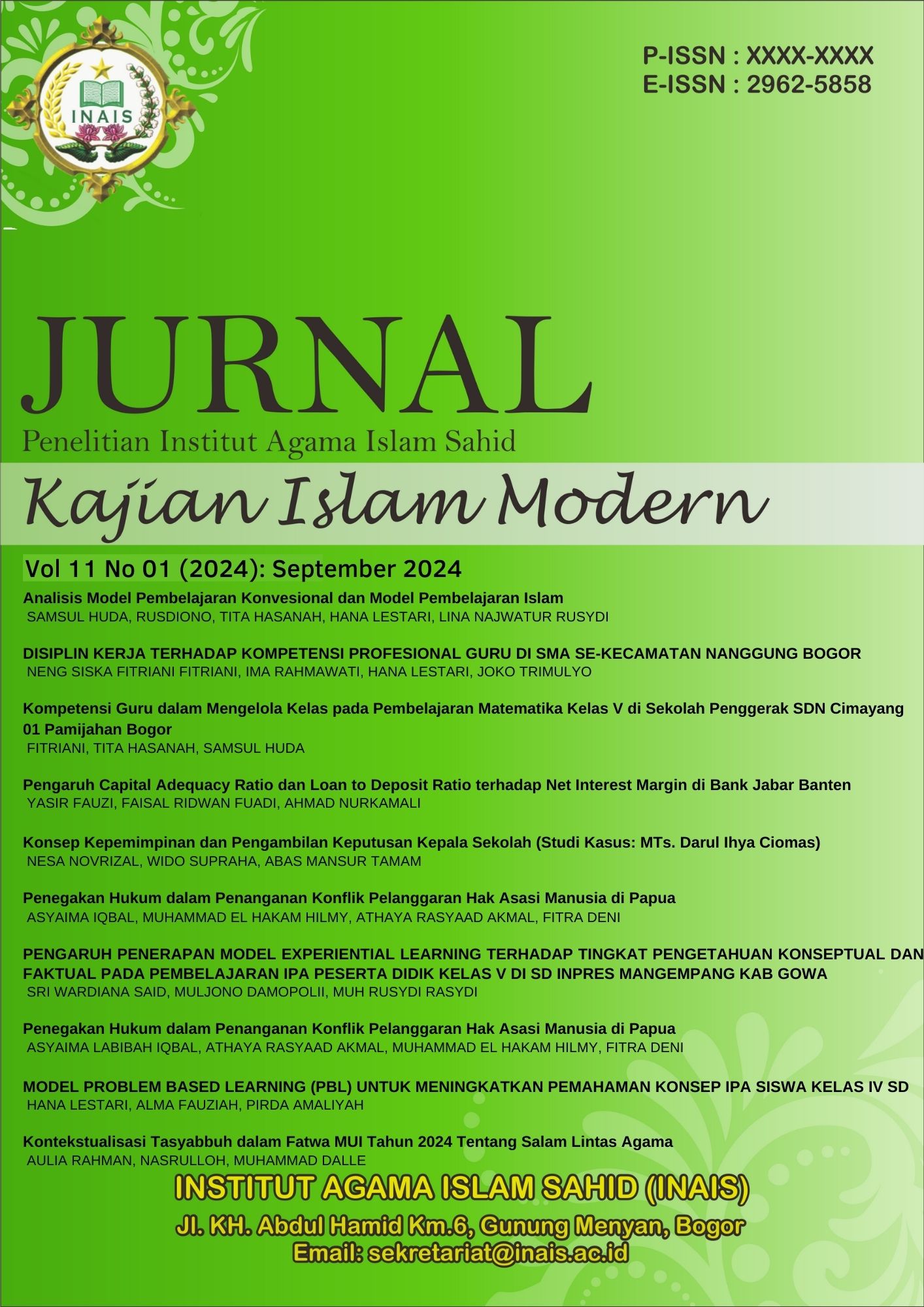Analisis Model Pembelajaran Konvesional dan Model Pembelajaran Islam
Main Article Content
Samsul Huda
Rusdiono
Tita Hasanah
Hana Lestari
Lina Najwatur Rusydi
This research aims to determine the comparison between conventional learning models and Islamic learning models. This research uses library research methods, and data collection uses documentation methods. The data analysis uses comparative techniques, namely analyzing the philosophical foundations of conventional learning and Islamic learning and looking at these two learning concepts from the perspective of Islamic education. The research results show that Islamic education has a very comprehensive range of learning models with efforts to help develop students to be more independent based on good values in their lives, so that they can form individuals who have good morals in relation to life. reason, feeling and action. The two learning models are very different conceptually, so there is a need for creative collaborative efforts from a teacher as a mediator and catalyst in the learning process. Therefore, these two learning models can be more useful according to conditions and situations, so that between conventional learning models and Islamic learning models creative and innovative collaboration will be created. In fact, learning with this model is very suitable for current comprehensive education needs
Keywords: Model, Learning, Education, Islam
Abdul Halim, A. R., & Zainuddin, Z. (2018). The effect of Quranic-based learning on tawhidic worldview and religious behavior. Journal of Education and Practice, 9(32), 52-59.
Abu Bakar, M. N., & Tahir, L. M. (2019). Islamic values integration in a secondary school mathematics classroom. Journal of Education and Learning, 13(2), 159-169.
Al-Attas, S. M. N. (1980). Islam and secularism. Kuala Lumpur: ABIM.
Anshari, M., & Fadli, R. (2018). The development of wisdom-based learning model for Islamic religious education in Aceh. Journal of Education and Learning, 12(4), 672-678.
Brophy, J. (2004). Motivating students to learn. New York, NY: Routledge.
Gagne, R. M., Wager, W. W., Golas, K. C., & Keller, J. M. (2005). Principles of instructional design. Belmont, CA: Thomson Wadsworth.
Ghazali, M., & Che Din, N. (2016). The effectiveness of hadith-based teaching in shaping Islamic values among Muslim students. Turkish Online Journal of Educational Technology, 15(1), 218-224.
Hassan, A., & Ahsan, T. (2015). Integrating Islamic values in education: A holistic approach. Journal of Education and Practice, 6(20), 111-114.
Hussain, I., & Rahman, Z. (2019). Tarbiyah-based model of Islamic education: A conceptual framework for personality development. Journal of Education and Educational Development, 6(1), 92-106.
Mahmud, H. S. (2014). Islamic education: The philosophy, aim, and main features. Journal of Education and Practice, 5(32), 86-90.
Nitko, A. J., & Brookhart, S. M. (2018). Educational assessment of students. Boston, MA: Pearson.
Othman, M. Z., et al. (2019). Tazkiyatun nafs-based integrated curriculum model for Islamic education: The case of Indonesian Islamic universities. Journal of Education and Learning, 13(3), 367-377.
Saad, N. M., & Yusof, N. (2018). The effectiveness of prophetic pedagogy in developing students' moral character. International Journal of Academic Research in Business and Social Sciences, 8(6), 818-829.
Wahyuni, R., & Syahroni, A. (2020). Salaf-based learning model in Islamic education (manhaj salaf) at religious boarding schools in Indonesia. Journal of Education and Learning, 14(1), 84-93.
Zainuddin, Z., & Permanasari, A. (2018). The effectiveness of Islamic pedagogical approach in enhancing the conceptual understanding of algebraic fraction. Journal of Physics: Conference Series, 947(1), 012084.



















